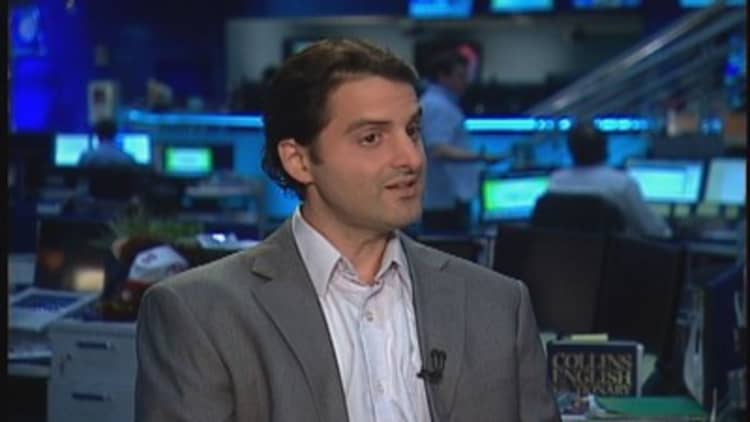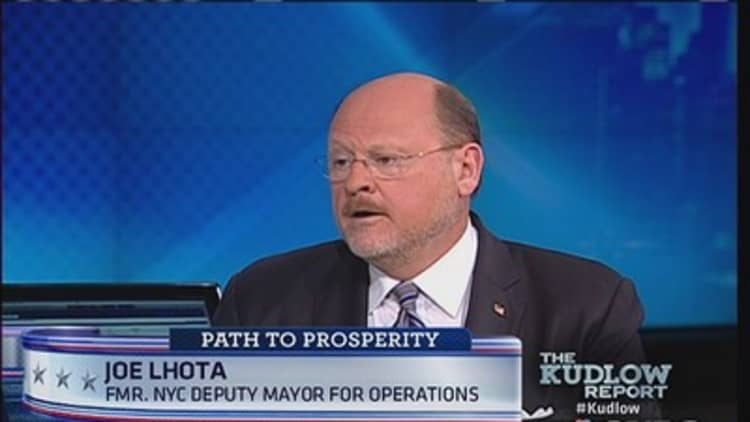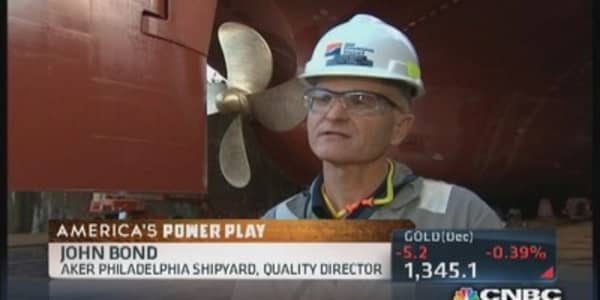
Deciding when to retire is one of the most important, and difficult, decisions an individual has to make, and it's not supposed to be a decision based on fear. That's exactly what's happening, though, across the United States. Fears of vanishing benefits have become a key factor for public sector workers nearing retirement age.
At the height of the recession in California, 9,500 public workers opted for retirement in 2010 rather than take the risk that budget slashing by the state capitol would leave them with less the longer they stayed in the system. That number has dropped to 8,000 through the first three quarters of 2013, but it's a "positive" economic data point that points to a larger, longer-term economic issue. California has recovered nicely from the financial crisis, reducing concern about an immediate legislative threat to benefits—California last year saw through changes in public sector benefits for new employees, which was a relief to existing, older workforce members.
Shires' family experienced the decision firsthand: his wife, a former city planner, was one of those eligible to retire but put off the decision once Governor Jerry Brown's retirement proposal was clearly only going to affect new hires. She faced a tradeoff between getting a lower annual payout by retiring earlier and the risks associated with the potential retirement reforms. Once those risks went away, she chose to delay her pension and to allow it to mature.
That decision dilemma is here to stay: public sector workers nearing retirement age face a spin of the retirement roulette wheel each year they choose to stay in the system. While the number of California public sector workers choosing to retire has dipped to 8,000 this year, it was 6,000 before the Great Recession, and that was a subset of a larger workforce than exists today.
"In the last year, we haven't had new conversations about cutting pension benefits, and so ... they are all listening and waiting anxiously ... many would rather work for another year and a have a little more security rather than lock in benefits now," said Michael Shires, associate professor of public policy at Pepperdine University. "If that budget conversation comes back, we will see that number spike again."
(Read more: The shutdown's real victims)
Shires said retirement roulette is a metaphor for the fading American Dream and the shrinking middle class. From the 1950s through the 1970s, American manufacturing was able to provide excellent, low-risk middle class jobs that made it possible for hard-working Americans to receive large, safe pensions, and the economy was sustained by the growth in worker productivity. In the 1980s through the 2000s, state and local government employers picked up the slack from private employers as the nexus of these excellent, low-risk middle class jobs, fueled by a burgeoning economy and population growth.
We need to step back and look at the retirement system from a somewhat different perspective than that it served our parents well so it should also serve us well and then our children.Syl SchieberFormer chair, Social Security Advisory Board
In fact, California public sector workers are now going through exactly the same thing that Delta pilots experienced a decade ago when it looked like the tanking of the airline industry after 9/11 threatened their pensions, said Syl Schieber, former chair of the Social Security Advisory Board and retired human resources consulting executive. In the case of manufacturing, the reality of market pressures, coupled with globalization and decreased public needs for strategic investment (aka the end of the Cold War), eroded the ability of these firms to sustain the high cost structures that accompany these kind of positions.
In the case of the public sector, a combination of generosity (with California being the prime example) and eventual fiscal reality, has led to a serious conversation on whether these benefits can be sustained.
(Read more: Made in USA manufacturing making a comeback)
"The result has been, and will continue to be, the erosion of the scale and scope of the security and generosity of these benefits," Shires said. "Things have changed. The reality for public workers is that the current public finance and benefit model is not sustainable in the long run at the federal (with massive deficits), state or local levels (with huge unfunded pension obligations). Something will have to give along the way."

Schieber said he is sympathetic to the situation in which many public sector employees find themselves, but government options are few when they are so starved of revenues they can't deliver on yesterday's unfunded promises. "I find it hard to figure out how to avoid the fiscal pincers that are closing in on some of these jurisdictions," he said.
"The current fights over retirement plans and health care are a generational issue and it has distinct implications in the context of workers realizing the 'American Dream' of each generation doing as well or somewhat better than the one that preceded it," he said. "We need to step back and look at the retirement system from a somewhat different perspective than that it served our parents well so it should also serve us well and then our children." he added.
(Read more: US still viewed as land of opportunity ... by some)
In his book, "The Predictable Surprise: The Unraveling of the U.S. Retirement System", Schieber demonstrated the generational shift by studying the data on various facets of retirement and health benefit plan costs for workers stated as a percentage of their lifetime earnings. For workers retiring in the 1950s, typical retirement age would have have been around age 67 or 68; for those retiring in the mid-1980s, it would have been in their low 60s and it's around 63 or so today on average.
Schieber said that when his father retired in the mid-1970s, his lifetime costs of financing his retirement and health benefits would have been around 15 percent of his lifetime earnings. For someone reaching their mid-60s in 2011, it would have been around 31 percent of lifetime earnings. The benefits as a percentage of preretirement earnings for the two generations are similar.
When you put that in the context of the American Dream, it means that people coming to retirement today have had 15 percent less of their lifetime earnings to do other things to meet their needs and "get ahead" than the earlier generation because of the higher retirement and health costs they faced.
"I think the public's perceptions of the arithmetic of realistic retirement financing is finally becoming sufficiently clear that people are simply saying public sector workers do not get to continue enjoying what the rest of us can't have because we simply cannot afford it if we want to have anything else left to try to get ahead," Schieber said. "These trends already have some built-in momentum that means they will be even higher for my son's generation than they have been for mine," he added.
Shires said that for every police officer working on the street we now have two in retirement and that is a typical example of the huge burden the public finance system faces. The story in California has set the national standard in terms of generosity of benefits, but across the nation, local jurisdictions are facing similar issues.
Shires said it is possible that the time will come when the high costs of these commitments exceed both the public's willingness and ability to pay. "When that happens, new norms will have to be established. ... The numbers are large, and it is prudent for public employees who find themselves in today's generous circumstances to seriously consider locking themselves into their current 'deal' by retiring," he said.
—By Eric Rosenbaum, CNBC.com





